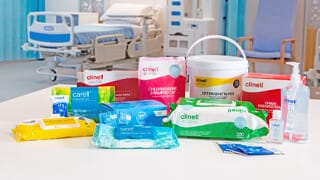Posted
15th August 2019
Research
A recent Irish point prevalence survey investigated isolation precautions usage and resources in a 900 bed hospital. 14% of inpatients were on isolation precautions, most of which were contact precautions. Compliance with the use of single rooms, signage, and PPE availability was >90%. However, only 2% of rooms had disinfectant wipes available at the point of care.
The survey was performed to evaluate the use of resources, and identify areas around the delivery of isolation precautions that require more thought. A total of 14% (125/869) of the total inpatient population were on isolation precautions at the time of the study, which was mainly contact precautions due to antibiotic resistant organisms. Reassuringly, almost all of the patients who required isolation precautions were isolated (96%) – this figure would not be as high in all settings due to limited availability of single rooms! 9 in 10 rooms had appropriate signage, and the appropriate PPE available. Perhaps unsurprisingly, only 31% of the rooms had patient-dedicated medical equipment. The most surprising finding was that only 2% of the rooms had disinfectant wipes at the point of care.
In this study, patient-dedicated medical equipment was not usually available in isolation rooms and disinfectant wipes were rarely available at the point of care. This is a bit of a “perfect storm”, because one of the key uses of disinfectant wipe is to disinfect medical equipment between patients (see more on “Clean Between”). Therefore, increasingly the availability of disinfectant wipes at the point of care would mitigate, to a degree, limited availability of patient-dedicated medical equipment. One of the major advantages of disinfectant wipes over “mop and bucket” type approaches to disinfection is that they can be positioned right at the point of care. This makes is easier for staff to perform disinfection when it matters most, particular for the disinfection of shared equipment.
SHARE THIS ARTICLE
Tags
Latest News
Celebrating 20 Years of GAMA Healthcare: Our Story
This month, GAMA Healthcare celebrates 20 years of helping prevent…
Norovirus: Understanding its transmission and prevention in the UK
Introduction Norovirus is recognised as the leading cause of viral gastroenteritis…
Clean Between to Reduce Healthcare-Associated Infections
Healthcare-associated infections (HAIs) are a significant concern for healthcare facilities…
Mpox: emergence of a new threat
A new threat related to mpox is emerging, in the…










